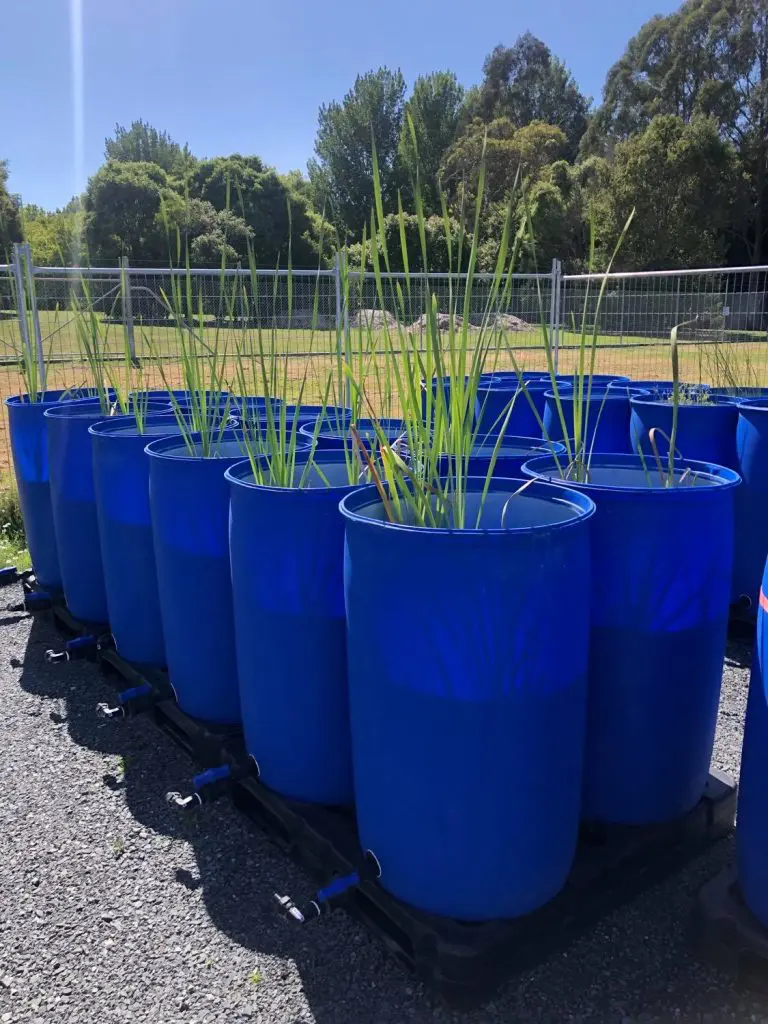Words by Tessa Thomson BLAKE NIWA Ambassador – Freshwater
Kia ora koutou! My time as a BLAKE NIWA Ambassador came to an end late January, and I have spent the past couple of months reflecting on the time I spent in Hamilton. It was an incredible two weeks, and I am still fizzing about the time I spent on my ambassadorship. My previous post reflected on the mahi I did the first week I was at NIWA, and the second week was just as, if not more, incredible.
We started the week by heading to Pukete, to the wastewater treatment plant, where we met with Sukh, who showed us around a few experiments NIWA have operating there. One of those projects is a sludge project which the team are working on, which involves treating the wastewater ‘sludge’ or biproduct, with certain algae and wetland plants. The next day we headed to an iwi owned farm which, in partnership with NIWA, are developing ways to look after their water ways with different algal species. This farm will have experimental algal ways installed over the next few years, and is led by Rupert Craggs, the principal scientist in the aquatic pollution team.

Pukete Treatment Plant – where Hamilton’s wastewater is treated.
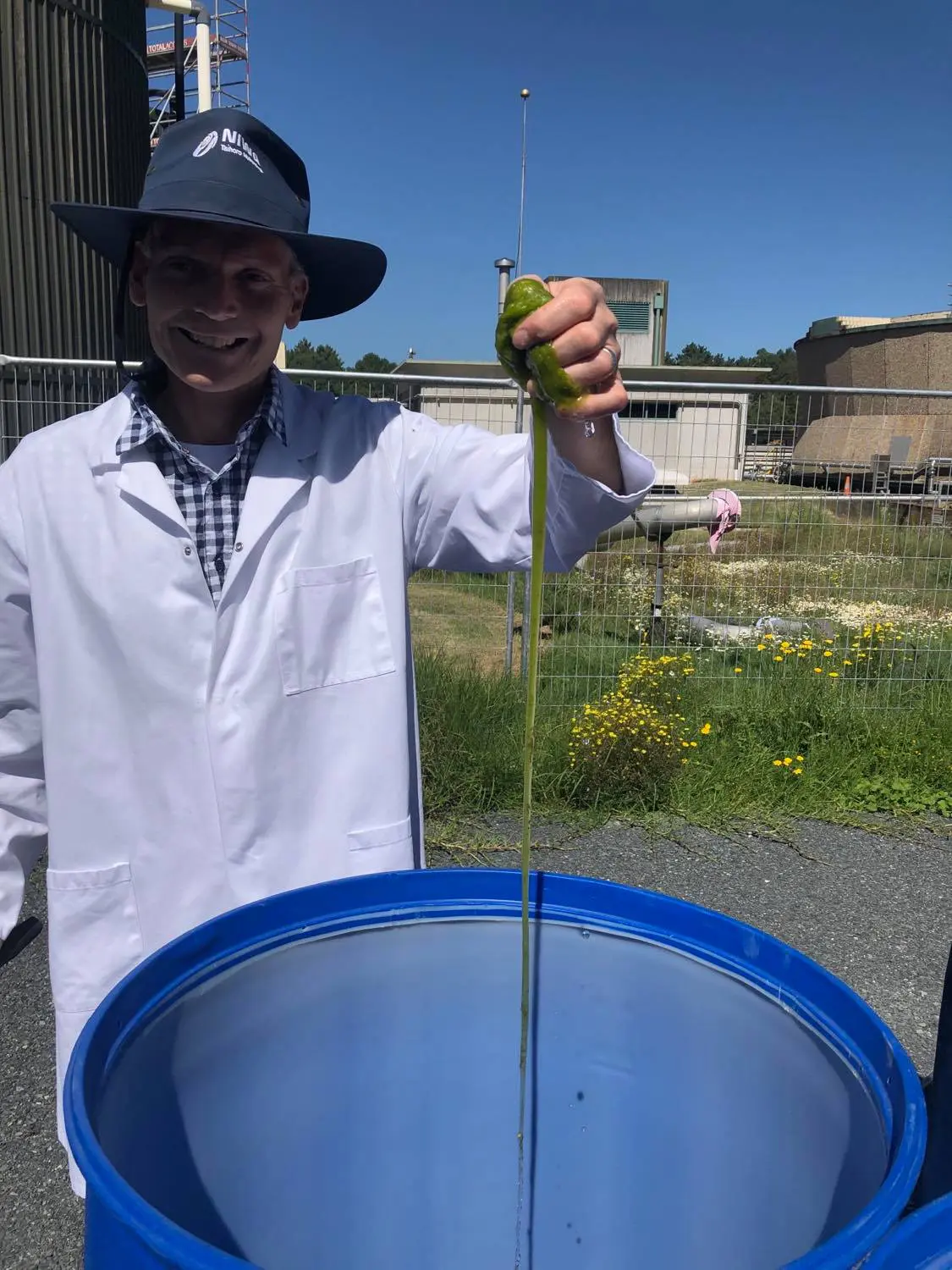
Rupert holding some ‘healthy’ algae.

Wetland plants in an experimental trial.
On Wednesday we headed to Tauranga, where we were lucky enough to spend the day with Tuana, visiting different marae in the area. We visited three marae in the Te Puna area, which Tuana held a lot of knowledge about. We visited Tawhitinui marae, Paparoa marae, and finally Tuana’s marae – Poutūterangi, which were all beautiful and was a key highlight of the week. The reason for our visits were to see if any of the marae would be interested and open to codeveloping a wastewater management system on their whenua.
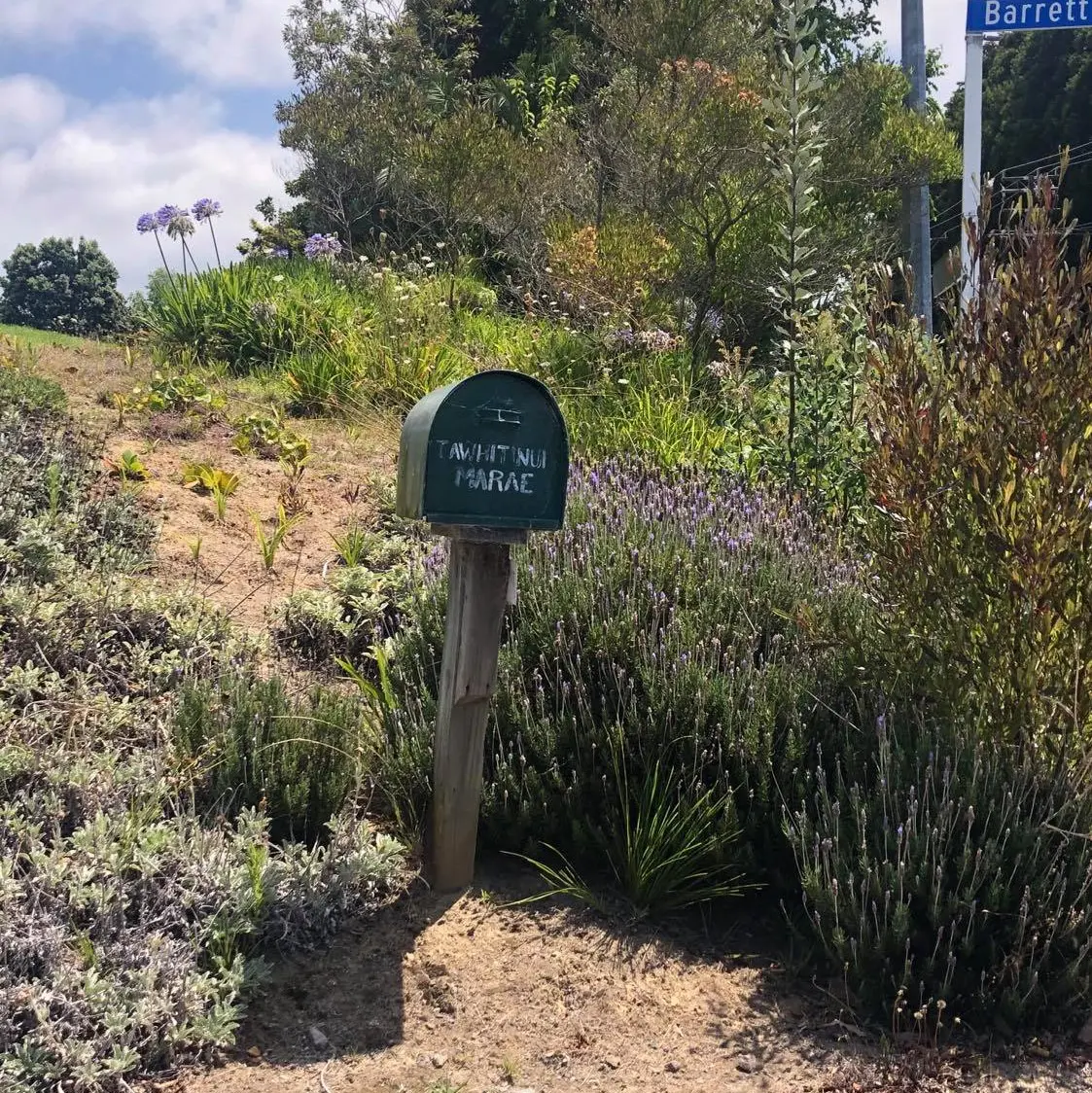
Arriving at Tawhitinui marae.
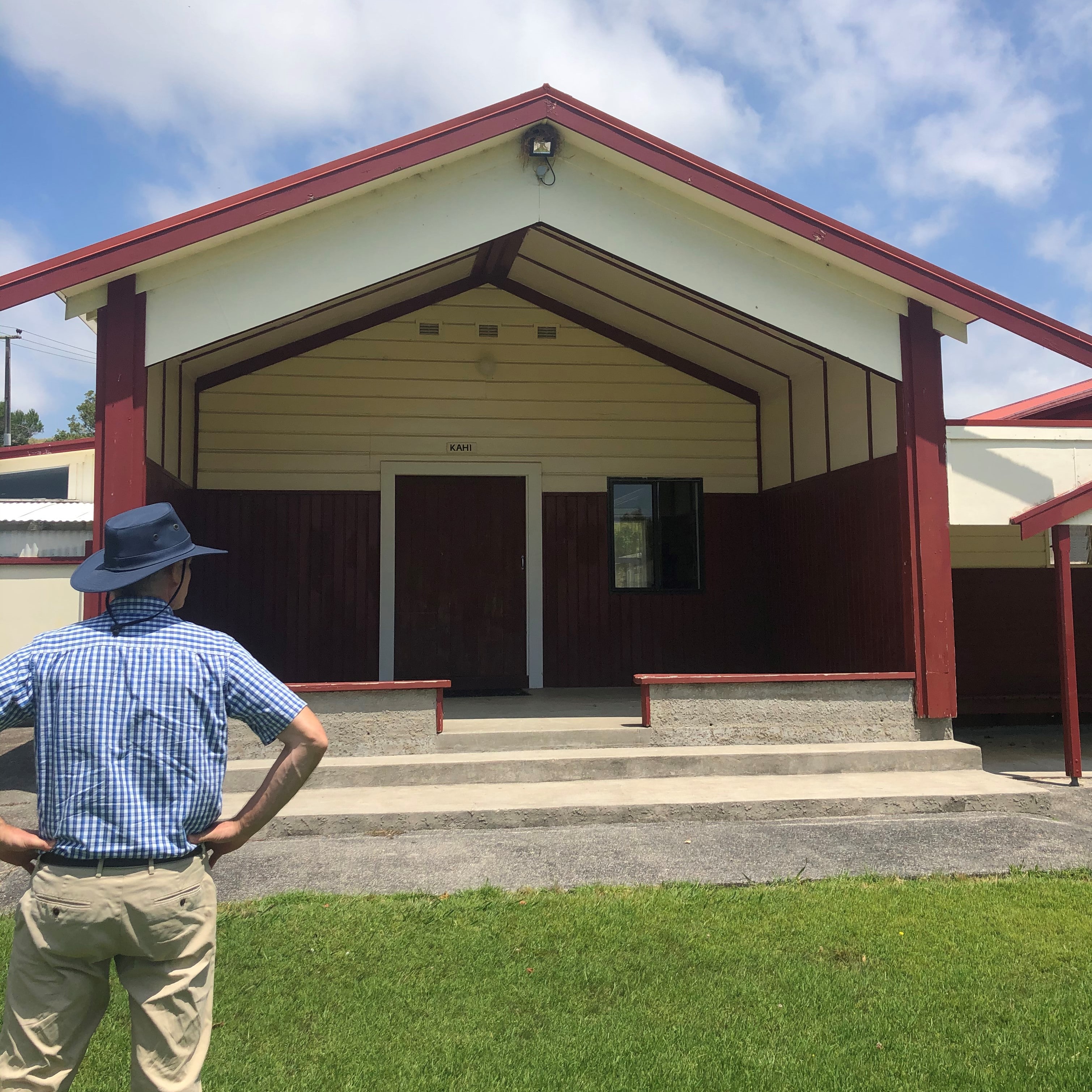
Tawhitinui marae
Another key part of the mahi I did, was to first develop an understanding of wai, or water, from a Māori perspective, and I did this by exploring the water cycle. The following is an inforgraphic I created of Te Huringa Wai, or the water cycle, from a Māori lense, which shows the different impacts that humans can have on waimāori, and the ways that the mauri of water can be adjusted. After I created this infographic, I tailored a specific infographic for the project that Rupert and Tuana were working on, to show how water gets to the marae, and then the different ways that water is used on the marae, and finally how that wai can safely return to the water cycle. These two pieces of work will hopefully assist Rupert and Tuana when they are trying to explain the processes involved in their project.
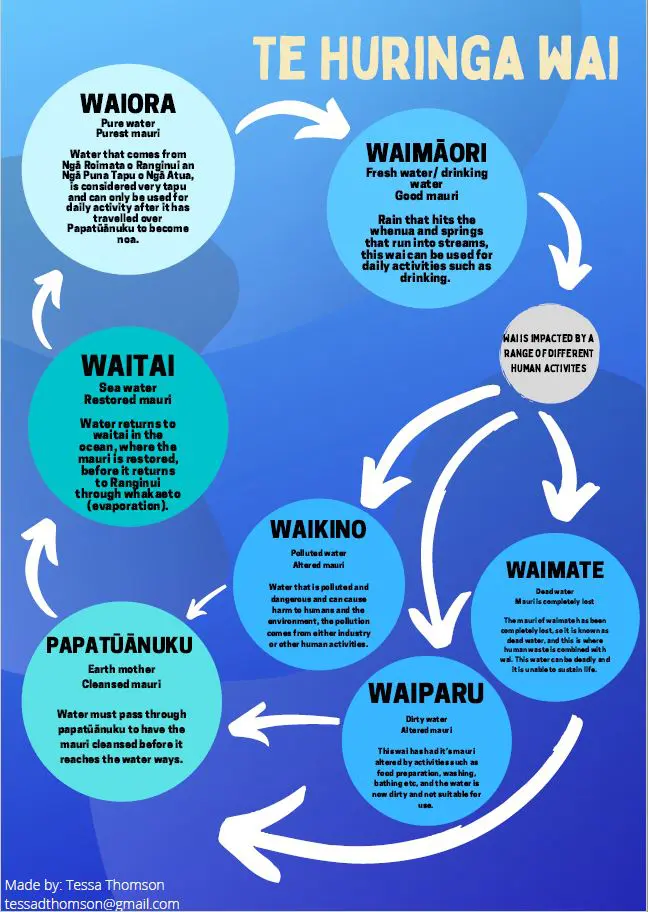
Te Huringa Wai – infographic showing the water cycle from a Māori lense.
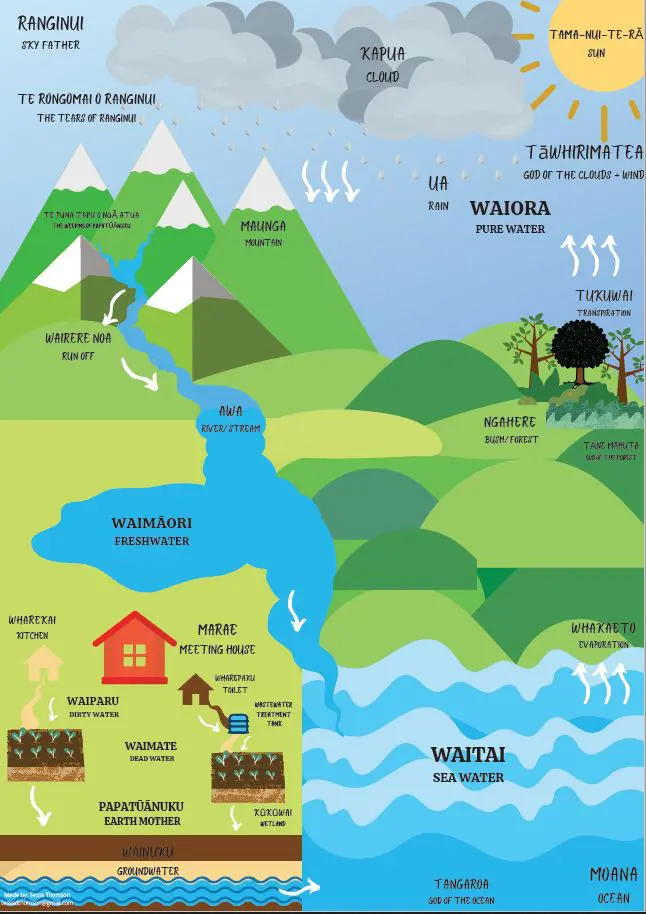
Infographic of the extended water cycle, showing some of the ways marae use water and also change the mauri of the water, and how this mauri can be restored.
Our final day saw us travelling to Raglan, to look at the wastewater management system that has been installed at an iwi campground, which was co-designed and developed by both the iwi and Rupert. This was an amazing example of the work that Rupert and his team are doing for communities, and specifically Māori. We did some sampling of the water to see how much treatment is occurring, and we did some small maintenance on the system. It was a great way to end my two weeks at NIWA.
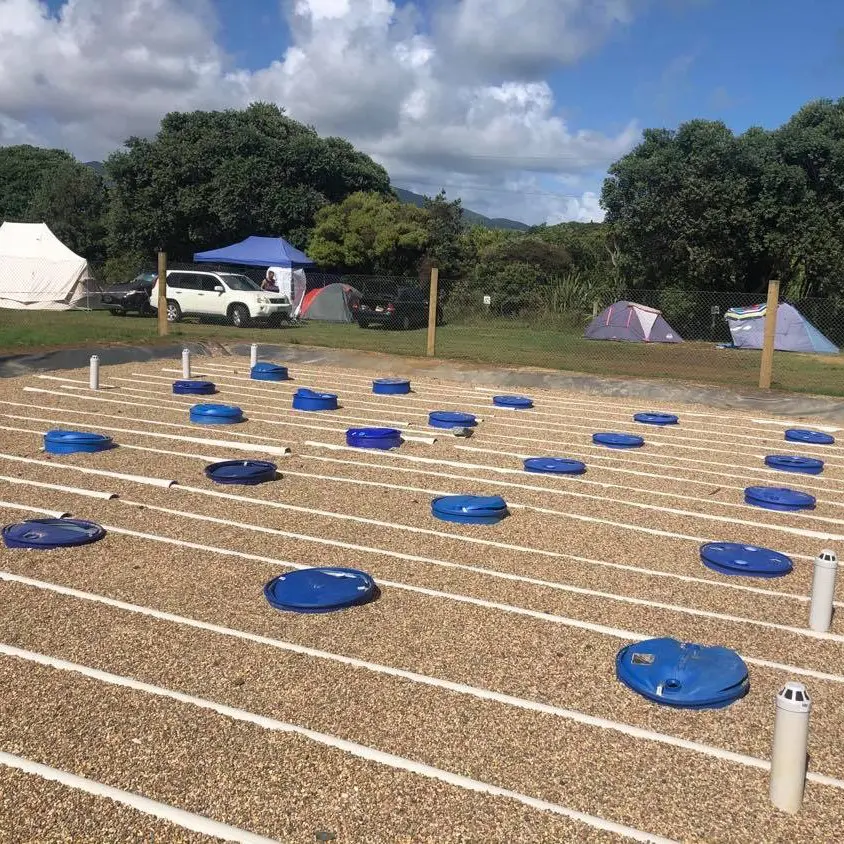
The wastewater management system at the campground in Raglan, co designed by both the iwi, who are the campground managers, and Rupert and team from NIWA.
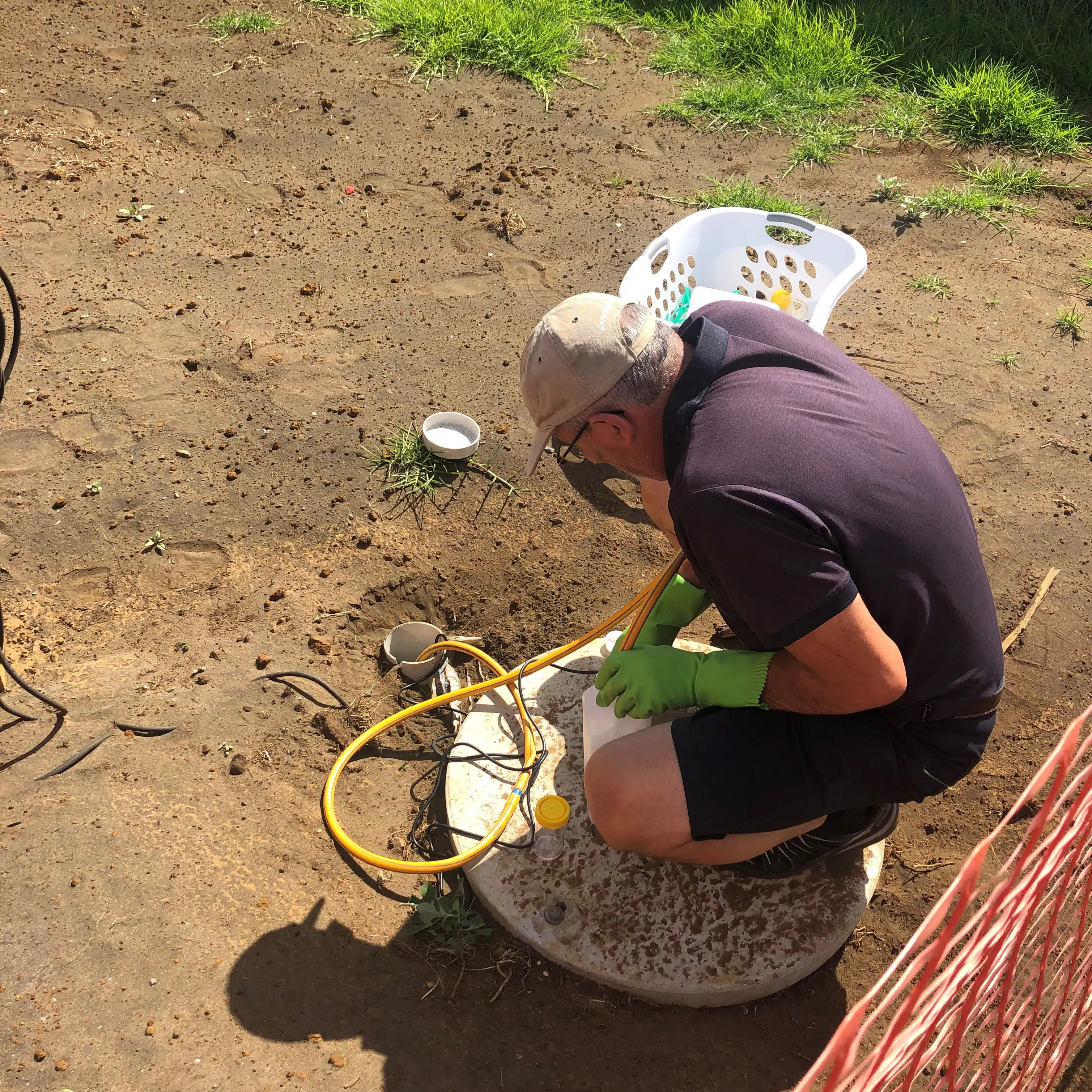
Testing wastewater moving through the treatment system at Raglan. We took these samples back to be tested at NIWA.
My time as a BLAKE NIWA ambassador taught me so much, and a lot more than I would have ever learnt in a classroom. Not only did I learn about the specific work that Tuana and Rupert are doing – with wastewater management and also run-off treatment, but I learnt what these incredible scientists do day in and day out. More importantly, the two weeks showed me why these scientists do what they do, which in a nutshell, is to improve te mana o te wai. I am excited to continue my journey in my scientific studies, and can only hope to contribute to communities the way that Rupert and Tuana do. I would like to thank them both, and BLAKE, for an incredible opportunity I will never forget. Ngā mihi nui ki a koutou kātoa.
Mauri ora!
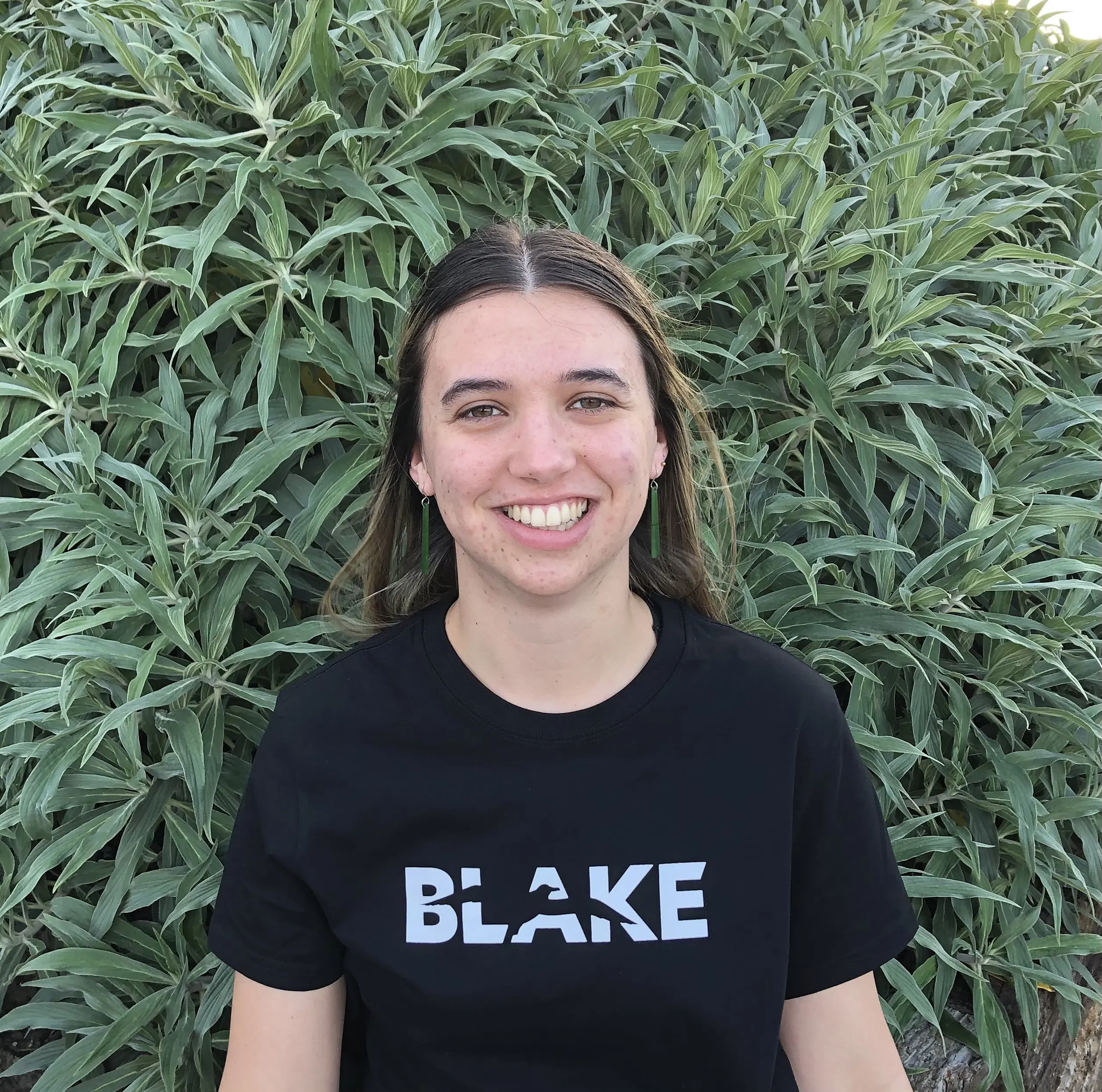
Tessa Thomson
BLAKE NIWA Ambassador 2020
